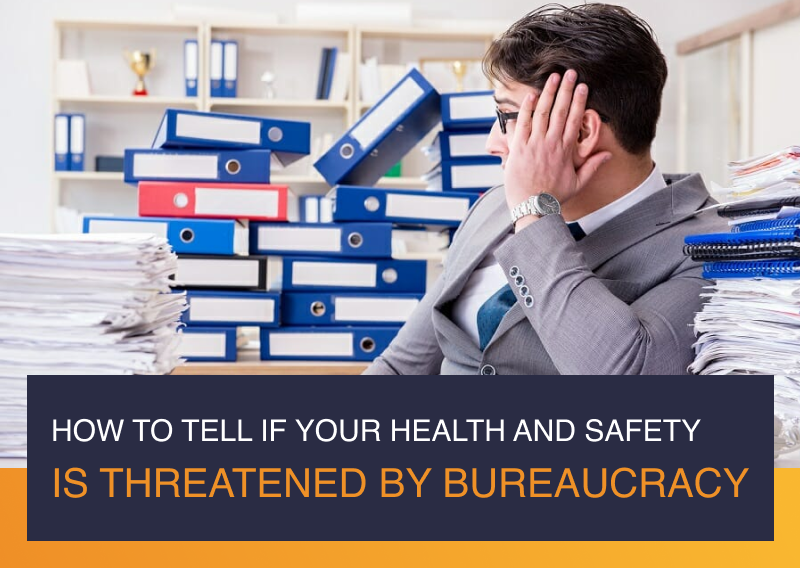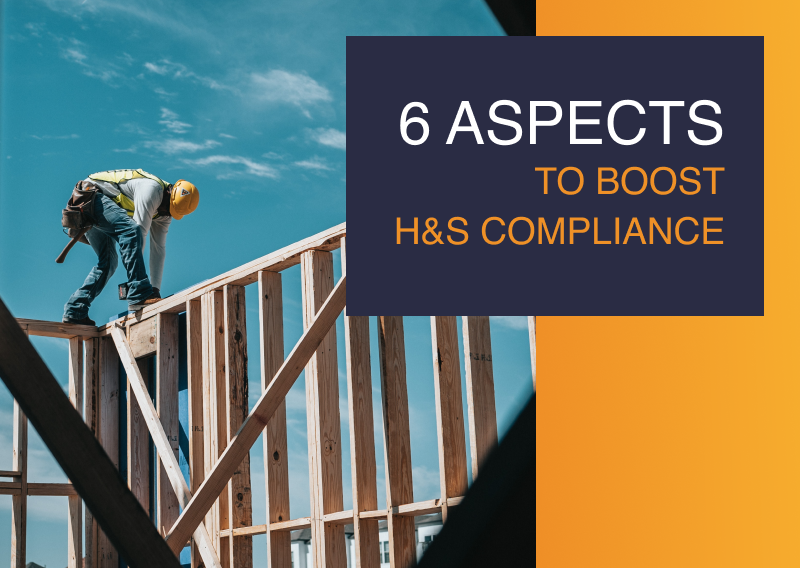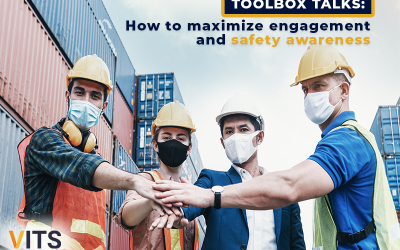How to Tell if Your Health and Safety is Threatened by Bureaucracy
Health and Safety operations often struggle to strike a balance between bureaucracy and effectiveness. Over-bureaucratic safety frameworks do more harm than good- but that doesn’t mean all bureaucratic systems should be tossed out the window.
What Role Should Bureaucracy Have?
Bureaucracy should be proof that your safety program is on track and effective- what it should not do is camouflage the problems existing in the system. When a H&S program focuses only on bureaucracy, false expectations are created- and the injuries, accidents and illness result in revealing the actual problematic areas in a safety policy that may have been disguised thanks to overbearing bureaucracy.
For example, you have all the signatures on a piece of training material. So, in terms of bureaucracy you’re covered. You have your signatures- so that means every single attendee has a great understanding of the training and proper H&S measures, right? Unfortunately, you couldn’t be more wrong.
Relying solely on bureaucracy is dangerous. In fact, it can be one of the largest downfalls of your company’s H&S precisely because you won’t expect it too.
The Dangers of Over Bureaucratized Health & Safety
According to the Harvard Business Review, the U.S economy wastes up to $3 trillion every year on bureaucracy. But beside the financial implications, there are various other issues that overemphasized bureaucracy leads to.
Problems Presented by Overemphasized Bureaucracy:
- An unnecessary amount of rules, regulations & paperwork
- Generates conflict between internal agencies
- Tasks are repeated due to a lack of overview
- Wastes resources
- Offers no opportunity to measure, track and adjust to growth
- Lack of accountability
Excessive bureaucracy detracts from an organization’s ability to adapt to its environment. By rethinking bureaucratic structures and systems, managers who want to free themselves from these constraints should be able to push past them in order to pursue new, more effective opportunities for their companies and the relative health and safety programs.
And here’s the thing, when you’re operating in a dynamic health and safety environment, you're going to need to adapt your strategy to deal with change.
But how do you know if your health and safety is stuck in a state of looping bureaucracy?
Signs of Excessive Bureaucracy:
- If your incident reports are not matching up with the signed training the staff have undergone- then bureaucracy is bringing your company’s H&S program down. And if you don’t address it, the result could develop into fatalities. This essentially shows you that your training is, in short, ineffective. Sure, you have the employees signatures saying they’ve completed the training. But how well are your employees versed in health and safety training? How engaged are they? You can remedy this by investing in H&S platform or software that helps to engage employees in training, ensuring that their signatures on training cards match up with incident reports.
- Bureaucratic bloat happens when there are layers upon layers of management, and decisions seem to loop round in circles before reaching completion. That's why you need to build a lean, dedicated team of smart, efficient people to manage your health and safety. Using a software platform can also help to dramatically reduce bureaucratic bloat- especially when multiple documents need drafting and approval.
- Is the decision making process one that seems to have no end? This is a sign of excess bureaucracy and, more specifically, your health and safety team has either not been made fully aware of the guidelines that drive decisions- or there simply are none. To remedy this, establish clear guidelines and procedures and be sure to follow them. While it seems counterintuitive to develop even more guidelines to reduce bureaucracy, the trick isn't to get rid of bureaucracy altogether- but on striking that balance and ensuring you have the right bureaucratic (most effective ones) in place. Ones that are in place to help health and safety, not just for managers to sit back in their chairs and dish out documents for signatures.
- Lack of Automation. Are there any tasks that could be run through Automation, but aren't? This is a good opportunity to review the way your business does bureaucracy. With any successful health and safety program, there needs to be an efficient level of task automation. This cuts out unnecessary work for health and safety officials, allowing them to focus more on proactive safety in the workplace instead of pushing papers at their desks.
So, What's the Solution?
Health and safety assurance is a responsibility of every business – keeping people safe at work can be a complicated matter, but it doesn’t have to be bogged down by bureaucracy. And yes, It’s a legal requirement that you adhere to all health and safety standards – but it is also extremely beneficial for companies with a strong workplace culture.
Striking the balance between bureaucracy and effectiveness might not appear easy at first- in fact, when you have all the H&S requirements resting on one person’s shoulders, it’s downright impossible.
Why stay lost in paperwork and bureaucracy when you can have the majority of those tasks automated?
Why spend your days chasing down signatures for a training that doesn't even seem to be carrying any weight, especially when compared to the incident reports?
Strike the perfect balance between bureaucracy and effectiveness by investing in a health and safety platform that can mitigate risks by managing the H&S process. Not only will you be able to rely on supreme automation, but you can focus efforts on supporting employees, fostering a company culture that promotes a happy and working environment.







